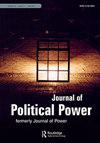Indirect rule, intra-systemic actors and impasses: a review
IF 1.3
Q1 POLITICAL SCIENCE
引用次数: 0
Abstract
Paramilitarism in Colombia has a very specific meaning: we are referring to counterinsurgent groups, which typically have an openly right-wing and conservative agenda, often operating with the tolerance, if not the collusion, sectors of the State. It has been a massive phenomenon in Colombia: in 2005 some 30,000 members of the Autodefensas Unidas de Colombia (AUC -United Self-Defences of Colombia) demobilised. Though there is still debate over how many of those were real combatants, still it is a massive figure particularly for a country that already has around 500,000 men in its armed forces and police. As such, Colombian paramilitarism has been subject to much academic interest for a long time, as expressed in an ever-growing academic and grey literature on the subject (see for example, Grajales 2011, Grajales 2013, 2017, Medina 1990, Medina and Téllez 1994, HRW 2001, Duncan 2006, Piccoli 2008, Hristov 2009, 2014, López and Ávila 2010, Zelik 2015). Why another book on this matter then? The book of Gutiérrez-Sanín stands aside on a number of grounds that make it not only worth reading to anybody interested in the Colombian conflict, but also, in my humble opinion, the finest addition to date to this literature.间接规则、系统内行为者和僵局:回顾
哥伦比亚的准军事主义有一个非常具体的含义:我们指的是反叛乱集团,这些集团通常有公开的右翼和保守的议程,经常在国家部门的容忍,如果不是勾结下运作。这在哥伦比亚是一个巨大的现象:2005年,大约有30,000名哥伦比亚联合自卫军(AUC)成员遣散。尽管关于其中有多少是真正的战斗人员仍有争议,但这仍然是一个巨大的数字,特别是对于一个已经拥有大约50万武装部队和警察的国家来说。因此,哥伦比亚准军事主义长期以来一直受到学术界的关注,正如关于该主题的越来越多的学术和灰色文献所表达的那样(例如,Grajales 2011年,Grajales 2013年,2017年,Medina 1990年,Medina和t莱兹1994年,HRW 2001年,Duncan 2006年,Piccoli 2008年,Hristov 2009年,2014年,López和Ávila 2010年,Zelik 2015年)。那为什么还要写一本关于这个问题的书呢?这本书的Gutiérrez-Sanín站在了一些理由之外,使它不仅值得任何对哥伦比亚冲突感兴趣的人阅读,而且在我的拙见中,它也是迄今为止这类文献中最好的补充。
本文章由计算机程序翻译,如有差异,请以英文原文为准。
求助全文
约1分钟内获得全文
求助全文

 求助内容:
求助内容: 应助结果提醒方式:
应助结果提醒方式:


